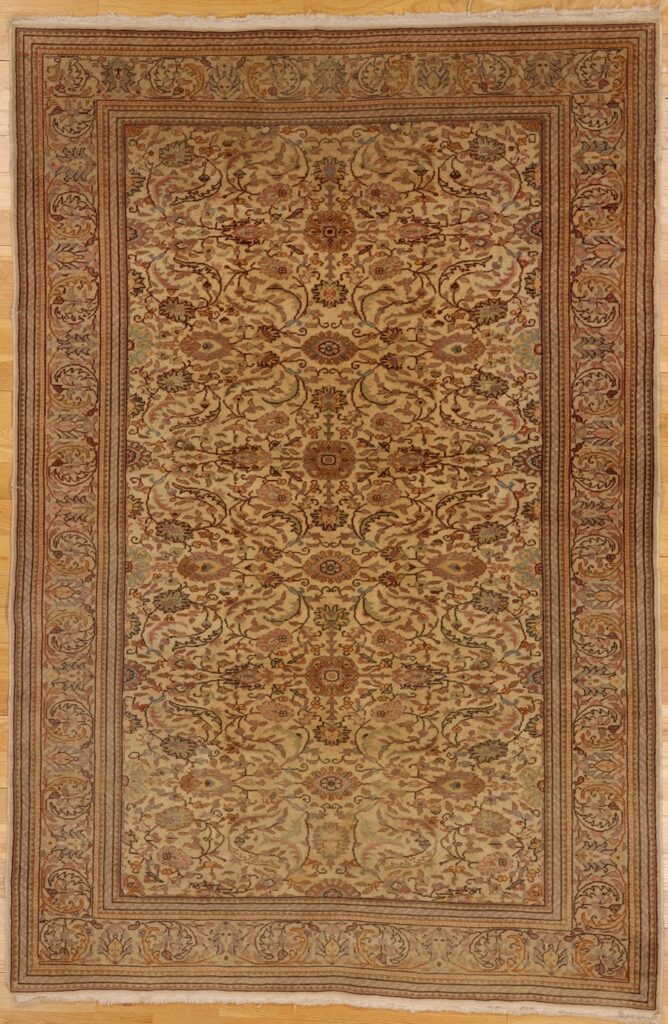Rugs woven in the Kayseri district reflect centuries of tradition, artistic skill and cultural richness. They have adorned palaces and homes, inspired fairy tales and legends and cushioned the footsteps of generations.
The main types of kilims woven in the area are Bunyan and Yahyali. Both have a wool foundation of warps and wefts and use floral and geometric motifs.
Origin
Known for their precise craftsmanship and beautiful designs, Kayseri rugs are one of the most sought-after types of Turkish carpets. Their unique aesthetic makes them a beautiful addition to any home, whether you’re looking for something traditional or modern. They also complement many different decor styles and can easily fit into an existing room.
There are 2 main kinds of rugs woven in the Kayseri region: Bunyan and Yahyali rugs. Bunyan rugs have a cotton foundation and wool and floss silk pile. They often feature natural colors such as white, black, grey, and purple. The motifs they carry are usually traditional ones, such as fine flowers, wheat, grapes, spinners, and eyelashes.
The Kayseri rug is a classic type of Turkish rug that features intricate designs and warm colors that mix well with any style of decor. Its unique design is reminiscent of antique Seychour rugs, which are known for their high-quality construction. The weaving technique of these rugs is also distinctive, with the knots being secured with a special type of thread called mercerized cotton or silk.
The city of Kayseri is located in central Anatolia in Turkey and has been inhabited by several empires throughout the centuries, including the Hittites, Phrygians, Romans, Seljuks, and Ottomans. The area is a major hub for rug-making and has a long history of producing high-quality, unique oriental rugs.
Style
Rugs woven in Kayseri are known for their artistic beauty, soft texture, and fine weaving. These rugs are generally more formal in their design than other Turkish carpets and are frequently used as wall hangings rather than floor coverings.
Kayseri is an ancient city that has been ruled by many empires over the centuries. These various civilizations have left their mark on the city’s culture and art, particularly in the area of weaving. The city’s rich history is considered in the intricate patterns of the rugs it produces.
Weavers in Kayseri use either wool or a combination of cotton and silk for their weavings. This makes the rugs produced by this town unique in the world of rugs. The rugs are often made with designs that are inspired by the cultures that Kayseri has traded with over the years, such as those of Iran and other areas of Asia.
Kayseri rugs can also be found with designs that are specific to the region, including those of tulips and roses. The rugs can also feature the mihrab, a niche in a mosque’s wall that shows the direction toward which Muslim worshippers must face during prayer. In the nineteenth century, Kayseri rugs started to become famous abroad because of their high quality and artistic appeal. During this time, it was not uncommon for Armenians to have a great influence on the development of Kayseri rugs.
Materials
The rug weaving tradition has been passed down through generations in Kayseri for centuries. Many local artisans would work together to weave intricate and exquisite carpets that were extremely popular among the Turkish middle and upper classes. Today, the area is known for its carpets that incorporate traditional and new designs in order to meet international demand.
Most of the Kayseri carpets are constructed using wool. However, beginning in the late nineteenth century some weavers began to use mercerized cotton for the foundation of the rug. This allowed for lighter-colored backgrounds, which were not found in other Anatolian city rugs at the time.
In addition, some weavers used high-quality silk for the warps and wefts of their rugs. This allowed for the creation of a soft and shiny rug with a unique appearance. Some weavers also added metallic threads to accentuate certain designs and motifs.
Historically, the Kayseri rug makers used earthy tones, such as rust, brown, and beige, for the background of their rugs. These earthy colors were contrasted by bright blues and reds to create stunning and eye-catching rugs. In addition to this, the weavers often employed geometric patterns and floral motifs in their designs. This resulted in a beautiful and elegant look that has made the Kayseri rug a very popular choice for both domestic and foreign buyers.
Prices
Unlike some other Turkish carpets, which are prized for their complexity and intricate designs, Kayseri rugs are simple and elegant. According to New York carpet dealer Hagop Manoyan Antique Rugs, “a good Kayseri rug is one that is harmonious in its color palette.”
The city was located along the Silk Road, and it was influenced by many civilizations through trade and cultural exchanges. As a result, Kayseri oriental rugs resemble those of Persia more than other Turkish carpets, featuring curvilinear and floral motifs.
Weaving rugs is an ancient tradition in the region, passed down through generations of women. Young girls, as part of their ceyiz (dowry), begin weaving a rug at age 14. They weave on looms in their homes and in local workshops.
Depending on the size of the carpet, it can take a year to complete. Weaving is a skilled and time-consuming process, so it is not surprising that the price of a Kayseri rug is high.
Final Words!
You will never regret buying Hagop Manoyan’s Kayseri rugs. Our expertise in sourcing and authenticating high-quality rugs ensures that you are investing in a genuine piece of craftsmanship. The variety and selection available at Hagop Manoyan Antique Rugs mean you can find the perfect rug to complement your home decor. Trust in our reputation and knowledge to guide you in making a purchase that will be cherished for generations.

